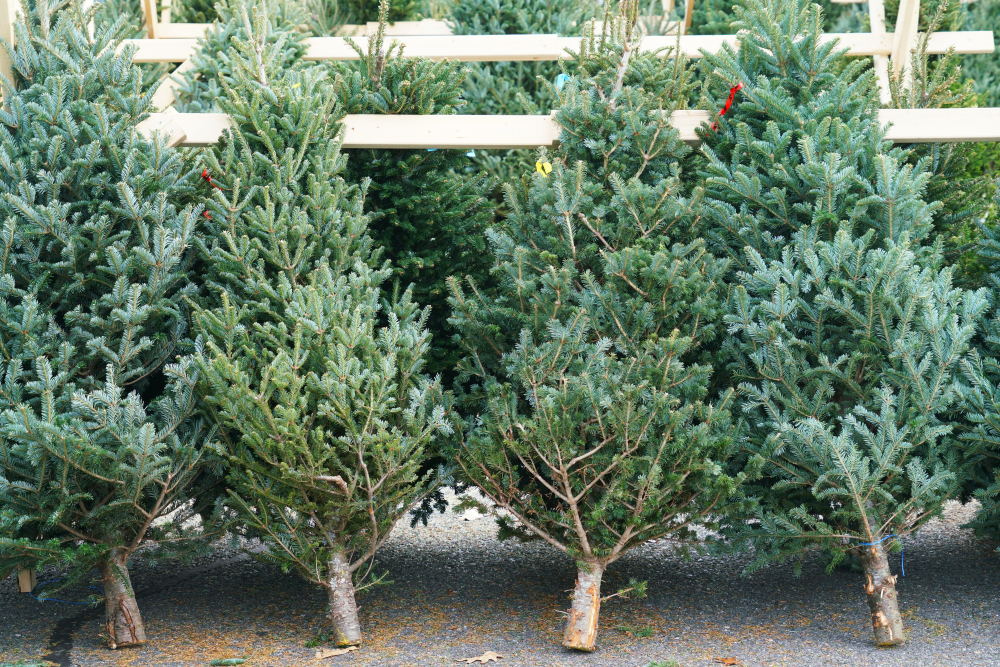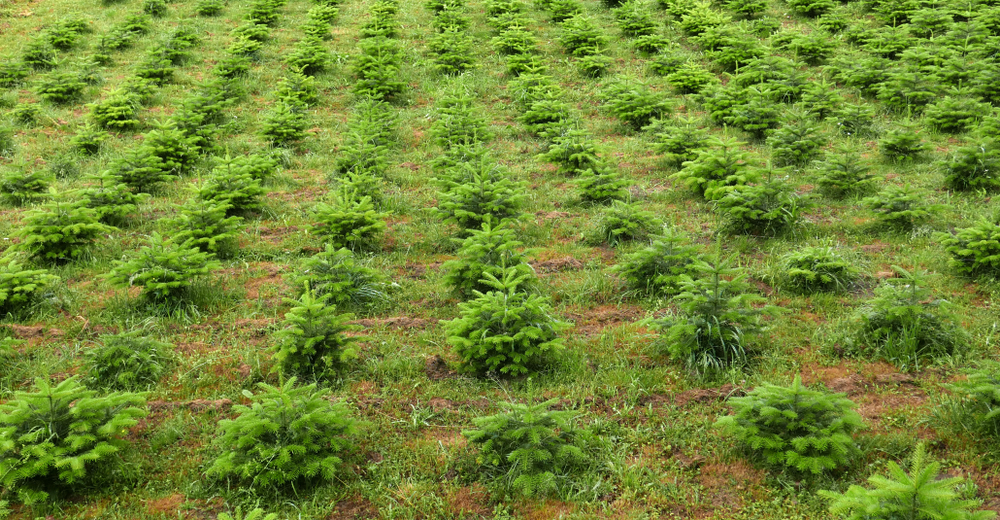A full growth cycle for a Christmas tree lasts more than a decade. The industry was hit hard by the 2008 financial crisis, the full effects of which are just now being felt.

To be clear, we are not experiencing a Christmas tree shortage. No one said anything about that. Some growers called it a “tight supply.” One person I spoke with said there was an “under supply.” But the important thing, they all stressed, is that there’s no shortage of trees.
This is all well and good, until you’re driving to three different lots trying to track down a tree. And clearly, some folks have been having a tough time getting their hands on just the right tree.
There are lots of reasons for the tighter supply this year. Supply chain disruptions have impacted trucking and transport availability. And in general, those costs have also risen for producers. There are also extreme weather events to deal with and a general loss of acreage for Christmas trees across the country. But one of the main reasons you might not find that perfect fir dates back to 2008 and the financial crisis.
Along with other industries, farmers were hit hard by the Great Recession. And growers of Christmas trees were under extra pressure, forced to forecast more than a decade out, rather than a single season. While producers of cereals or grains might be able to change up crops from year to year based on predictions and costs, tree-growers are locked in for the long haul. “Most of our farms run on a ten-year rotation,” says Marsha Gray, executive director of the Christmas Tree Promotion Board. “And a lot of things can happen along the way.”
Seedlings typically take two to three years to get started in a nursery or by a wholesaler, and then they go to the field for another eight to ten years. In 2008, many tree farmers simply couldn’t stick with the business. They didn’t have the funds to plant a crop that wouldn’t see a return for a decade, or they had to scale way back. And 13 years later—or, the full growth cycle of one Christmas tree—here we are.
“Now, I’m looking at 2032, 2030, when I’m going to be planting this spring,” says Russell Wagner, the president of the Pennsylvania Christmas Tree Growers Association and a grower himself, at TLC Tree Farm in Hegins, Pennsylvania. Shortly after the 2008 recession, Wagner retired from his nine-to-five job and looked to scale back a little with his tree farm.

Young fir trees at a Christmas tree nursery. Photo by dba duplessis, Shutterstock.
He couldn’t stay away from the farm for long, ramping up production a year or two later. This year he just doesn’t have as many trees available. Normally, he would keep his fields open for a “choose and cut” right up until Christmas Day. This year, however, the fields are already closed off and the farm will have a more limited supply of fresh cuts for customers. “I have a lot of people interested in a block of trees that I’m holding for next year, [asking] ‘When are you going to allow us in those fields over there?’ Next year,” Wagner says. “It’s difficult, but I’m holding them.”
Of course, it’s not solely the decisions made a decade prior that impact growing lots. Even with all the planning in the world, farmers can’t escape the weather. This year, extreme weather events came into play in a big way. From overwhelming heat to flash floods, growers are often able to weather these kinds of fluctuations and simply wait them out. Typically, Gray says, if there’s a weather concern in the first year of planting, “we still have nine years to make up the difference. We can plant extra, we can stretch the tree, there’s a lot of things over a ten-year period our growers can do to get trees to market on time.”
That’s not the case in 2021. The extreme heat in Oregon—that state that grows the most Christmas trees in the nation according to 2017 data from the USDA—actually sunburned some of the trees, turning their tender young shoots from a pale green to a bright red. “Most of those trees, they trimmed them out, and in one to two years, they’re back on the market,” Gray says. “So it doesn’t kill the tree, it just makes it look kind of unattractive.” Many other young seedlings were lost for good, although Gray says a small portion of trees that were truly wrecked, growers were sometimes able to sell for wreaths or decorations.
While this year’s weather was unique, many growers are preparing for more extremes in the coming seasons. “I do believe we still haven’t fully seen the ramifications of [this year’s weather],” says Scott Powell, president of the Michigan Christmas Tree Association and nursery manager at Dutchman Tree Farms in Manton, Michigan. “We will see an under supply coming up, because folks that I’ve talked to out west, they’ve seen maybe an 80 to 90 percent loss from what they planted in the spring of 2021. We’re not going to experience that until 2030, probably.”
The other factor hindering availability comes into play before the trees even get to the field. Both Powell and Wagner say there’s a shortage of seedlings available at nurseries and through wholesalers, which poses a challenge to experienced growers, but can also keep new farmers out of the business altogether. “We all depend on the nurseries. From what I’ve been hearing, they’re maxed out,” Wagner says. “Nurseries are selling more of their stock to existing growers and don’t have any left to get to a new grower. So the poor guy that wants to get started has a hard time finding any plants to put out in spring of 2022.” That could mean preparing for another short supply in another ten years.
But, as each grower mentioned, there are trees out there, and there will be trees available right up until Christmas. They might be a little more expensive than last year (estimates are between five and ten percent higher), but you can find them. The trick this year, say growers, is to open up your expectations. That 10-foot Douglas fir you love with your cathedral ceiling? Yeah, that might be too tall an order. Instead, Powell says, “Maybe I’m going to settle for an eight to nine [foot], or even a seven to eight [foot].”
Wagner puts it simply: “There are enough trees, if you’re not too picky.”